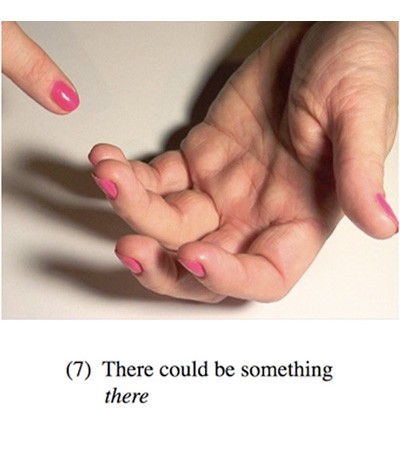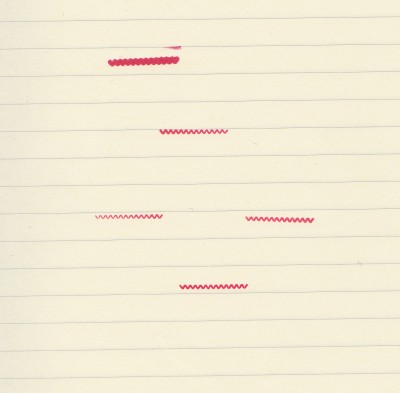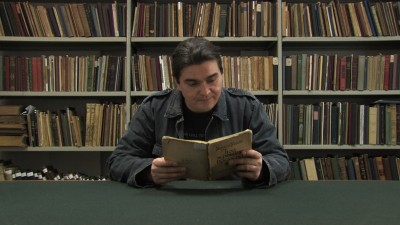
Rodney Graham, catalogue for Through the Forest, MACBA, 2010
What follows is a compendium of “reading as publishing” strategies derived from the work of Rodney Graham, based on my reading of two texts in the catalogue for Graham’s recent Through the Forest MACBA show: Grant Arnold’s “It Always Makes Me Nervous When Nature Has No Purpose: An Annotated Chronology of the Life and Work of Rodney Graham” and Christa-Maria Lerm Hayes “Rodney Graham: Literature and What an Artist Does with It.”
Lerm Hayes essay is structured around the following taxonomy, which serves as a useful taxonomy of Graham’s “reading as publishing” concerns: The Study; Writing (or Not); The Book; The Typewriter, Paper; The Bookshop; Slipcases, Architectures for Reading. “Reading as Publishing” is a term I have been exploring for my presentation and workshop as part of Reading for Reading’s Sake at Islington Mills, Salford, 9-11 April 2010. As Hayes proposes:
[Graham] approaches literature… not as an opposed pole, but with ambivalence, similar to how he engages with cinema: quoting, appropriating literature’s methods, motifs, and forms, critiquing, at times lampooning, as well as revering and even reviving its traditions. What emerges is a way of working with literature that (re)presents it in innovative ways to new (and old) audiences… It provides a current and coherent (albeit idiosyncratic) way of harking back to the times of the universal artist/ scholar, while in all its idiosyncrasies and ambivalence showing how even today a critically reflected unity of all the arts may be possible.
Rodney Graham problematizes what it is to produce and receive literature today, to read, to interpret it visually and textually, to write, design, print and sell books, to exhibit them as well as the outcomes of his complex, visual investigation into literature. (65-6)

Rodney Graham, Reading Machine for Lenz, 1993
A COMPENDIUM OF READING STRATEGIES
Lenz (1983) is an appropriation of a short unfinished work of fiction by Georg Buchner. As Lenz journeys through a mountain landscape to find a pastor, experiencing psychological breakdown, Graham takes the first 1,434 words of C.R. Mueller’s translation, typesets them so they fall on five justified pages, and creates a narrative loop so the reader, like Lenz, continually retraces their steps. The resultant work is produced in two forms: a 16 page prospectus (in edition of 210) and cloth bound book of 336 pages (in slipcase).
Also working with the loop is Dr.No (1991), a bookmark with text by Graham ( derived in part from Alain Robbe-Grillet) that can be inserted between pages 56 and 57 of the original first edition to extend and loop a scene in which a poisonous centipede transverses Bond’s naked body.
As Hayes summarises this method:
In using selection and the loop as strategies, Graham also conveniently caters to the art context’s comparatively shorter attention span or expected reception time. Like Joyce, Graham strategically rearranges literary history, showing the disturbing, evocative, fresh and colourful nature of earlier writing, “recycling” sources, placing himself within both a nineteenth-century and a Viconian context, that of a cyclical world order, for which the book, an object that one can turn around on its spine, is certainly a good image. (70)
Graham considers inserting his own text into existing books. Finds Lacan unsuitable, but turns to Freud. Freud Citation is a photograph of the cover of The Species Cyclamen L by Friedrich Hildebrand with a text referring to the books role in Freud’s anaysis of his “Dream of the Botanical Monograph.” Freud glimpsed the book in a Viennese bookshop and then dreamed about it.
This project develops into Installation for Münster, a 1987 installation for Skulptur Projekte Münster in which 24 dummy books – their cover a replica of Hildebrand’s texts, their pages blank, if you could open them to see – are installed in windows of Münster’s bookshops. As Max Wechsler observes the book:
has become an object, a symbol of its content rather than an actual container for them, and the starting point for an autonomous chain of associations… this is an art that wants to retreat under the hood of the everyday, to withdraw, if not into invisibility, at least into a discreet reserve. (100)

The System of Landor’s Cottage: A Pendant to Poe’s Last Story (1984) is a book based on and encompassing Edgar Allan Poe’s Landor’s Cottage: A Pendant to “The Domain of Arnheim.” Poe describes a small cottage set in an idyllic valley. Graham makes the story into a novel by adding an extensive description of an annex to the cottage. The project becomes an architectural model, drawings, a dummy book, and a 312 page novel (in edition of 250). A leather bound deluxe edition of 4 is also produced.

Rodney Graham, Standard Edition, 1988
Graham also produces book sculptures. Die Traumdeutung, (1986) inserts books into replicas of minimalist sculptures by Donald Judd. Sculptures are also produced including works by Raymond Roussell(Nouvelles impressions d’Afrique), as well as La Séminaire (Lacan), Cours de Linquistique générale (Ferdinand de Saussure) and Jokes/Case Studies and Standard Editions (Freud).
Casino Royale (Sculpture de Voyage) (1990), another project derived from Ian Fleming’s James Bond novels, is installed in a hotel room so you could lie in bed and read above you a section where Bond, tied to a chair from which the seat caning has been removed, is thrashed on buttocks and genitals. As Hayes observes of Graham’s focus on slip-cases and “mini-architectures” for books, they make reading impossible but, through echoing the books subject matter, provide “associative and interpretive companionship.” (80-82)

Rodney Graham, White Shirt (for Mallarmé), Spring 1993
In White Shirt (for Mallarmé), Spring 1993. A black cardboard box contains a white men’s dress shirt folded as if on display in a clothing shop. Inside the shirt is a sheet of white paper with with the text of Stéphane Mallarmés poem “The Demon of Analogy.” Through the fabric of the shirt can be seen a sheet of tissue paper with the poem title, the phrase “La Pénultième est morte” and Mallarme’s signaure. The shirt fits Graham. It is intended to be exhibited simultaneously in gallery and shop front.
Irradiation (1993) is a boxed set of 8x 10 inch glass negatives of the first forty-four pages of section four of Bibliographie analytique des principaux phénomènes subjectifs de la vision by Joseph Plateau, which describes optical effects caused by the observation of stars at night.
Graham’s confinement of the book to the luxury edition enables a foregrounding of the book as both impossible and ideal. Illustrating the former, a project on Czerny’s piano exercises links them to Galileo’s fomulation of the law of free fall, to produce a text variously exhibited as a 1,443 page wall text, and 24 volumes (one hour of music).
Projects (1988) begins from a glimpse – like that which leads Freud to his dream of the botanical monograph – that mistakes a cardboard box for a book “such as I myself should someday like to write” Graham observes:
This later idea set off a new speculation – a daydream in which I found myself mentally assembling a whole series or recent thoughts about books into a more or less coherent form, into a prescription for my ideal, future book. I should most certainly (I recall telling myself) have the work’s title and my name composed in the romantic-style topography I love (in black, red, green and gold ink – I had recently seen an example of this, the engraved title page of an old architectural pattern book, at the home of my brussels friend) the paper of the book should be soft and supple ( I like a book that yields to the hands and drapes when opened) its pages of a creamy white etc. etc.
In Five Interior Design Proposals for the Grimm Brothers’ Studies in Berlin (1992), CAD drawings of the brothers matching studies were manipulated and moved around creating a series of varying doubles, then rendered as nineteenth century interior design illustrations.

Rodney Graham, Rheinmetall / Victoria 8, 2003
In the film Rheinmetall/ Victoria 8, the typewriter becomes covered in filmic snow/ flour, which Hayes interprets as an end to optimistic views of technological progress. It offers an image of “reading as publishing” that both reveals and conceals. In Hayes useful phrase Graham practices “a conceptualism that overdoes it” (78)
Graham’s more recent work has moved away from a focus on the book and reading, although Allegory of Folly: Study for an Equestrian Monument in the Form of a Wind Vane (2005), a pair of black and white light boxes, features Graham as Erasmus, reading a phone book whilst seated backwards on a model horse used to train jockeys.

















